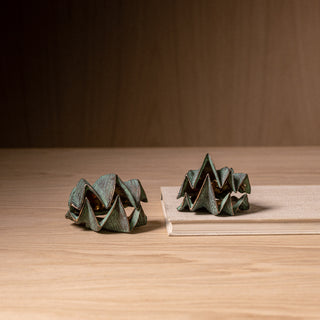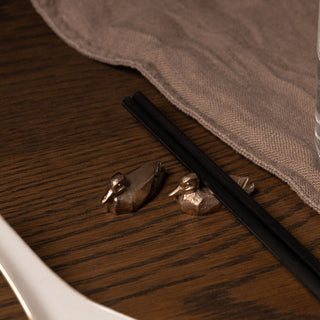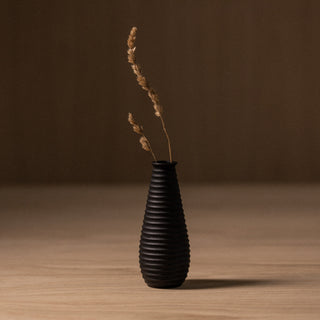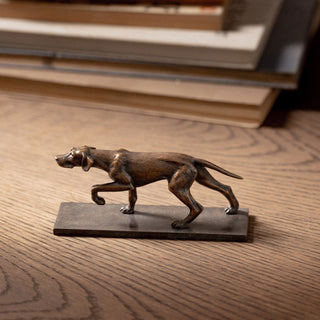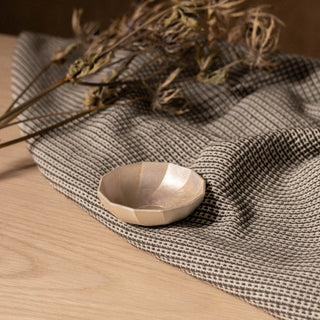Our Craft
Making of
A Crab Claw Ornament
Discover the lost wax process in our short film.
Step by Step
We use the lost wax investment casting process, it's a multi stage production that's ideally suited to detailed high quality work.
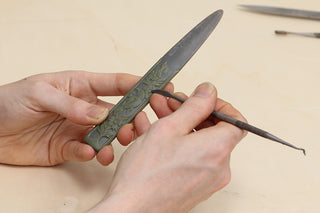
Step 1
Pattern Production
Patterns and master copies can be made from all sorts of materials, we combine traditonal hand sculpting and modern technologies like 3D printing to make our patterns.
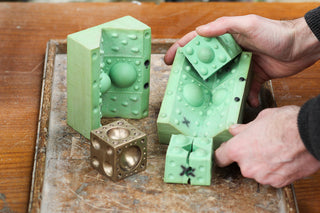
Step 2
Mouldmaking
A rubber mould is made using the original pattern. Every detail captured in this mould will be reproduced in the bronze castings.
This mould has include air gates, channels for the molten bronze, and other specialised details to ensure a high quality casting.
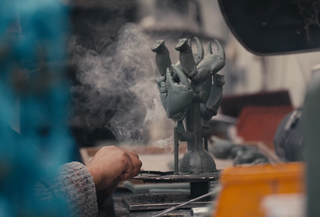
Step 3
Wax & Sprue
Wax copies are made from the mould and then attached to a sprue. The structure and orientation of the sprue is critical to allow the best flow of the molten bronze.
Our specialised wax department have been making sprues for complex artworks for decades and every piece is individually made.
Step 4
Investment
The wax sprue has a plaster jacket poured around it before being baked in our kiln. This hardens the plaster and melts the wax which is recycled in our wax department.
This creates a negative space in the hardened plaster in the same shape as the wax sprue. This is the void that will be filled with the molten metal when it is cast.
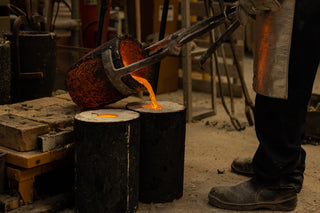
Step 5
Casting
The bronze is heated in our furnace to create mesmerising molten metal. The temperature is measured and moderated to create just the right fluidity in the molten bronze.
Casting is an art unto itself with the pouring technique being the difference between a high quality casting and scrap. Pouring too quickly creates turbulence in the mould, while pouring too slowly creates air pockets and other issues.
Step 6
Finishing
Our finishing department removes sprue and casting marks before assembling pieces.
With the parts welded together we work to refine details and prepare the surface for patina or polishing.
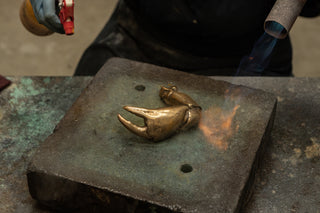
Step 7
Patina
Every one of our pieces is finished individually and by hand.
Patina can create traditional aged finishes but also highly layered and brightly coloured effects.
Once patinated the pieces are finished with a microcystalline wax to bring out the natural lustre of the metal.

